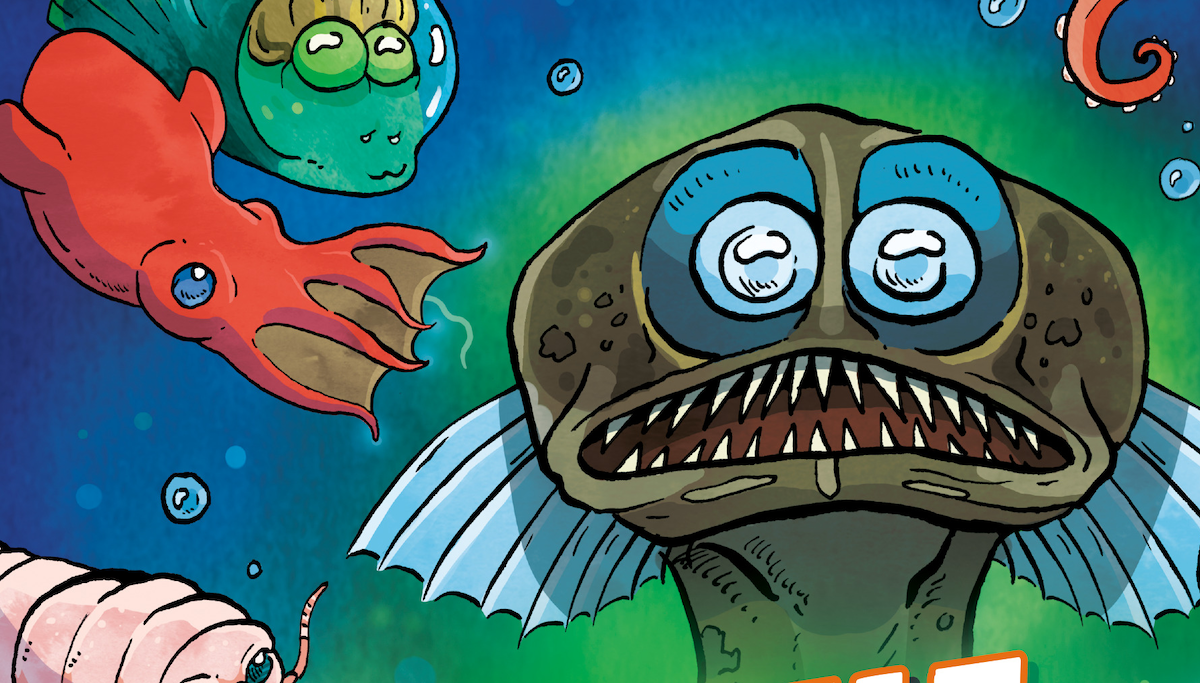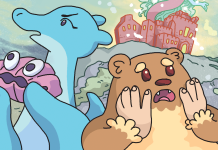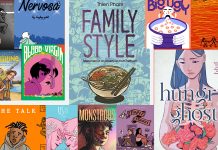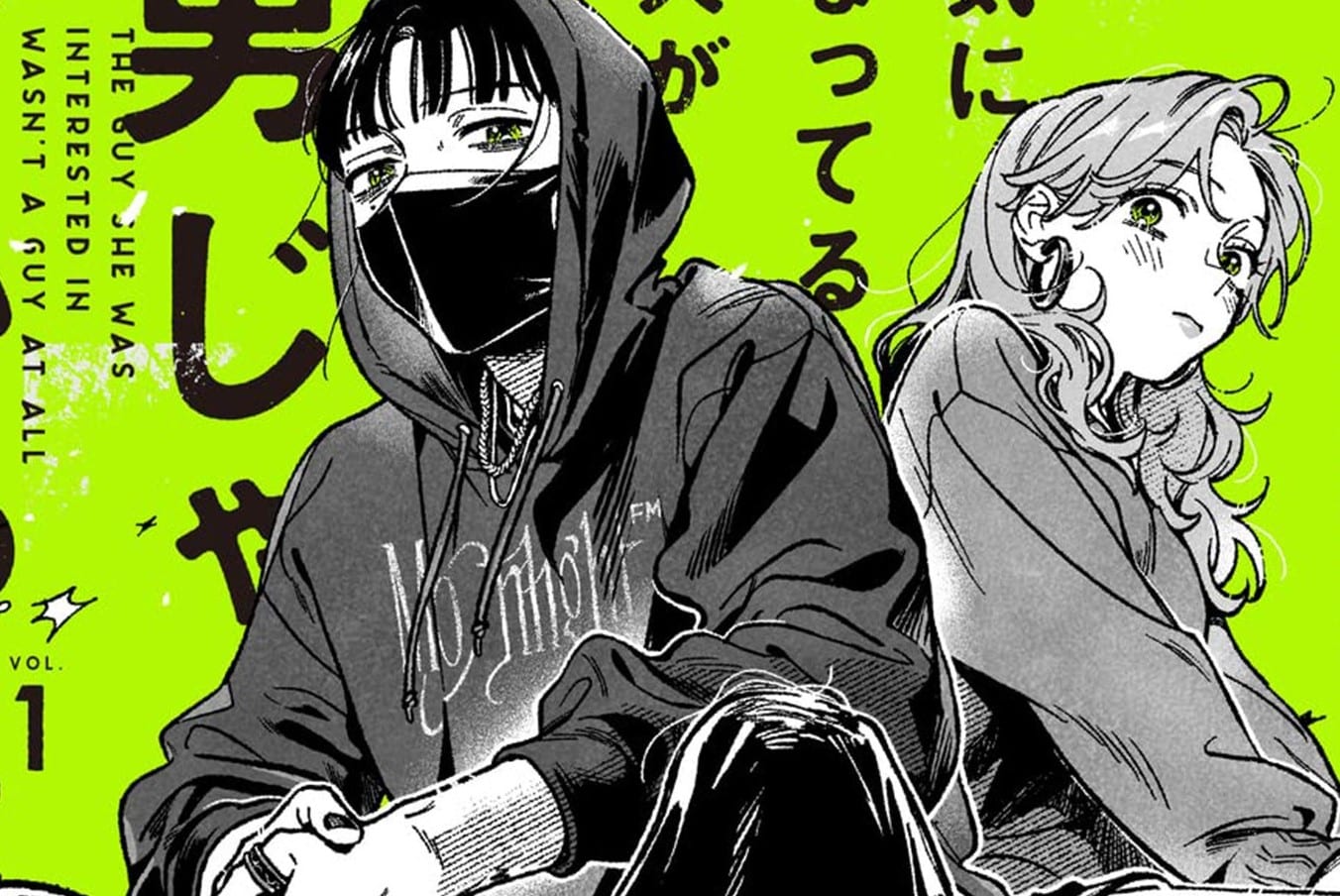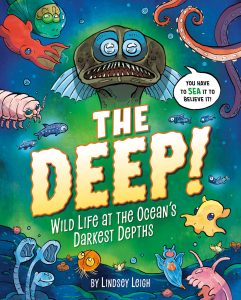
Did you know June is National Ocean Month? Consider celebrating with The Deep!: Wild Life at the Ocean’s Darkest Depths by Lindsey Leigh. This clever and informative nonfiction survey uses comics and comedy to impart fascinating facts about the denizens of the most enigmatic areas of the ocean. Through The Deep!, readers of all ages will be introduced to creatures like the blob sculpin and the pigbutt worm, to fascinating concepts like marine snow and chemosynthesis, and to foundational scientific knowledge like the names of the various ocean layers.
The middle-grade nonfiction book is available from Penguin Workshop beginning today, June 27th, 2023. The Beat caught up with Leigh over email to ask about the process of researching The Deep!, to ask about any deep sea creatures whose depiction might have posed a particular challenge, and of course, to ask all about her favorite aquariums and cemeteries. Plus: which pair of deep sea creatures are ripe to headline a buddy comedy movie? Read on to find out!
AVERY KAPLAN: What was the genesis of this book?
LINDSEY LEIGH: I have been fascinated by the deep ocean since I was a child because it is a place that seemed so full of mystery with many animals still to discover. The creatures that lived down there are so downright alien and strange, I was hooked. I have always had a soft spot for animals that other people consider a little odd or creepy, and the deep sea has no shortage of wonderful weirdos. How could I resist making a book about a place that has carnivorous sponges and yeti crabs?
KAPLAN: What was the process of research for this book like?
LEIGH: The research process was quite extensive, but also varied widely from books and documentaries to online articles, and scientific papers. Typically, I would search online for top level information and then dive deeper with more detailed scientific papers and books. My graduate school thesis project was also about deep sea life, so I also previously did a lot of research on the animals I wanted to include in a book on this topic (an early concept of this book was an alphabet book idea called ABC of the Deep Dark Sea).
KAPLAN: Did you find any of the facts you discovered during research for this book to be particularly memorable?
LEIGH: There were so many facts that surprised me during the research stage. One in particular that stands out is that there are potentially a quadrillion bristlemouth fish in the ocean (I didn’t even know that a quadrillion, which is one thousand trillions, even existed!). These fairly small and relatively unassuming fish are the most numerous animal with a backbone in the world.
I was also surprised to learn that the vampire squid, one of my favorite critters in the book, are actually not squid at all, but are in a different group apart from octopus or squid (though they are all mollusks).
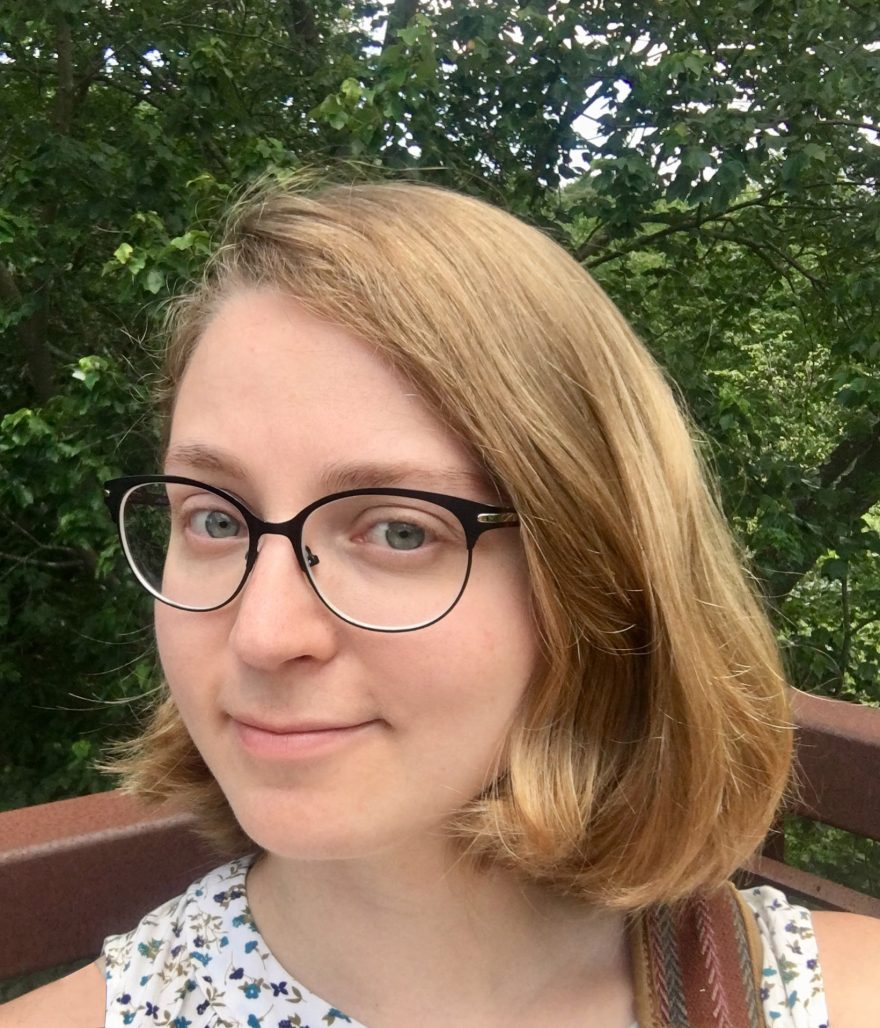
KAPLAN: Did the depiction of any of the creatures pose a particular challenge?
LEIGH: Many of the animals depicted in the book required quite a bit of research to draw because so little is still known about the deep sea. For example, I read that vampire squid could produce a glowing mucus cloud but there were no photographs of this happening, so I was stumped. Referring to a scientific paper on the vampire squid, I reached out to one of the paper’s authors directly and he was able to explain that it wasn’t really a cloud but “an amorphous bunch of brightly glowing individual spots.” So I hope I have depicted it as accurately as possible in the book!
Another example is the Telescopefish, which is the main star of the book’s cover. There is a Smithsonian photograph of the fish, which has the amusingly shocked, muppet-like expression that I loved, but that photograph was taken of a dead specimen where skin was flaking off and it looked a little worse for wear. So I compared that photo to others of live Telescopefish, which have much fuller and healthier-looking fins and a more natural, less washed-out coloration. I mentally merged those together to create the Telescopefish on the cover.
KAPLAN: Are you a fan of aquariums? Do you have a favorite?
LEIGH: Yes! I’m fond of the Baltimore Aquarium, as that was the one that I often visited as a child, but the Atlanta Aquarium is hard to beat as it is huge and has beautiful whale sharks and manta rays.
KAPLAN: Why are comics such an effective method of imparting nonfiction information?
LEIGH: I feel very strongly about using comics to communicate complicated scientific ideas, primarily because of the accessibility of the medium. I’ve worked with some scientists to create comics based on their scientific papers (which, while very fascinating, can be dense and difficult to understand for the average reader). I really enjoy trying to find funny comparisons or jokes to make while communicating the idea, because I think humor is a great tool for learning.
KAPLAN: You mentioned in your author bio that your favorite animal in the book is the sea pig. Can you tell us why?
LEIGH: This answer is quite simple, it is mostly because I think they are adorable! Their slightly pink color and little shuffling tube feet are very charming. Early in the book process, I drew a cartoon of a sea pig with a sea spider in a comparison to Charlotte’s Web and I thought that was so funny so I’m glad it made it into the book. I also loved learning that baby King Crabs will hitch a ride on top of sea pigs and scientists aren’t quite sure why. I think there is plenty of potential there for a buddy comedy movie…
KAPLAN: I understand that you are a fan of cemeteries. Can you tell us about your favorite cemetery to visit?
LEIGH: I find cemeteries very peaceful and I feel especially calm whenever I visit one. While I was studying illustration, I would often visit Oakwood Cemetery in Syracuse, NY whenever I was feeling stressed and take a walk around, sometimes sketching trees, and would always leave feeling better.
KAPLAN: Is there anything else you’d like me to include?
LEIGH: I was always interested in biology and science as a kid, but when I started to feel very passionately about art and illustration in high school, I wasn’t sure I would be able to unite both of my interests. I studied illustration, but always kept my interest in the natural world alive and incorporated it into many of my projects. Joining the Guild of Natural Science Illustrators and interning at the Smithsonian National Museum of Natural History also reinforced that there was room for both disciplines in my life.
I feel strongly that there are so many commonalities between art and science and there are numerous ways to explore both. I hope I have convinced you all that both fields don’t have to be so separate and can exist in harmony! I’m thrilled I get to share this planet with animals like pigbutt worms and vampire squid and I hope I can inspire young animal enthusiasts to appreciate the weird and wonderful world around us.
The Deep!: Wild Life at the Ocean’s Darkest Depths is available at a local bookstore and/or public library near you now!



